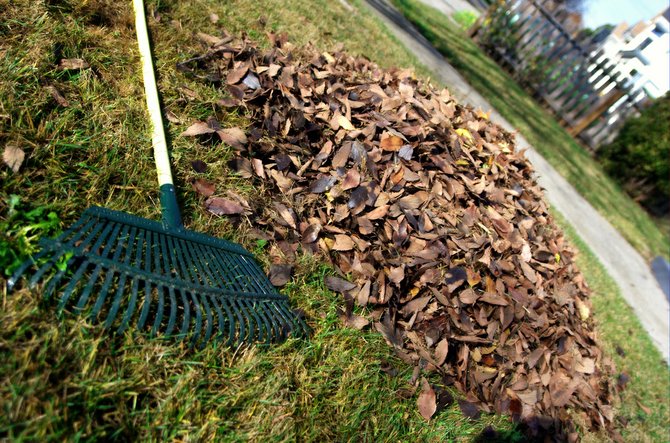Using leftover vegetation and leaves from your yard and neighbors’ as compost will help prepare your garden for spring. Photo by Photo by CarbonNYC, through Flickr
People who garden can always find things to do. Sometimes, it seems we have too little time to actually enjoy our gardens. So why waste time, or a season, for that matter? You can get a head start on next spring’s organic garden now and free yourself for relaxation and enjoyment.
How? Take advantage of “free” vegetative matter to build up your next year’s garden bed with leaves.
Fall brings leaves by the ton, not only in our yards but around our neighborhoods and, well, everywhere there’s a tree. People are busy raking and bagging them up, in fact, so they can be picked up in urban areas to be thrown away. Country folk often just pile them up and burn them. Why let this free vegetable matter go to waste? Or, worse, add to pollution?
Think for a minute: The trees took nutrients from the soil last spring and mixed with sunlight, air and water came up with these glorious leaves to shade us all summer. That’s a lot of energy expended. That’s a lot of soil nutrients. Why dump it in a landfill?
Honor the tree. Recycle! Ask your neighbor (if you are sure he or she hasn’t been spraying trees with poison) if you can take those piled leaves.
You can just dump them in your garden, as thick as you like, and cover them with plastic (black or clear, doesn’t matter), and next spring you will have nicely composted leaves with added nutrients from the other yard(s) to your garden—free imported fertilizer. It should be decomposed enough to mix with compost you have saved also to provide a rich, dark, loamy growing medium ready to plant.
It’s also a great way to expand your garden. If, say, you have a 4-foot by 8-foot Jim’s plot and want to double it in size, just put down cardboard or layers of old newspapers (to block weeds) in the new area, and put leaves on it and cover it with plastic. When you uncover it in the spring, voila! New garden!
It’s called “lasagna gardening.” That is, layering paper or cardboard and leaves like lasagna to create a raised bed for plants. No tilling. No muss, no fuss.
Some purists will say that one type of leaf—say oak, or pine or pecan—is too acidic or whatever to use in this way. Don’t worry about it. If you, as I always recommend, take a soil sample each spring to be tested for fertility, pH, etc., you can determine exactly which amendments are needed to produce the food you want to grow. (For more information, see the Mississippi State University Extension website: jfp.ms/soiltest.)
The main thing is to not waste this opportunity. Now is the time to prepare for spring. Let the seasons do the work for you, so you can enjoy your garden come spring.
Occupy Your Lawn!
Occupy Your Lawn with raised bed “lasagna gardening,” outlined by Gaining Ground – Sustainability Institute of Mississippi: jfp.ms/lasagnagardening



Comments
Use the comment form below to begin a discussion about this content.
comments powered by Disqus